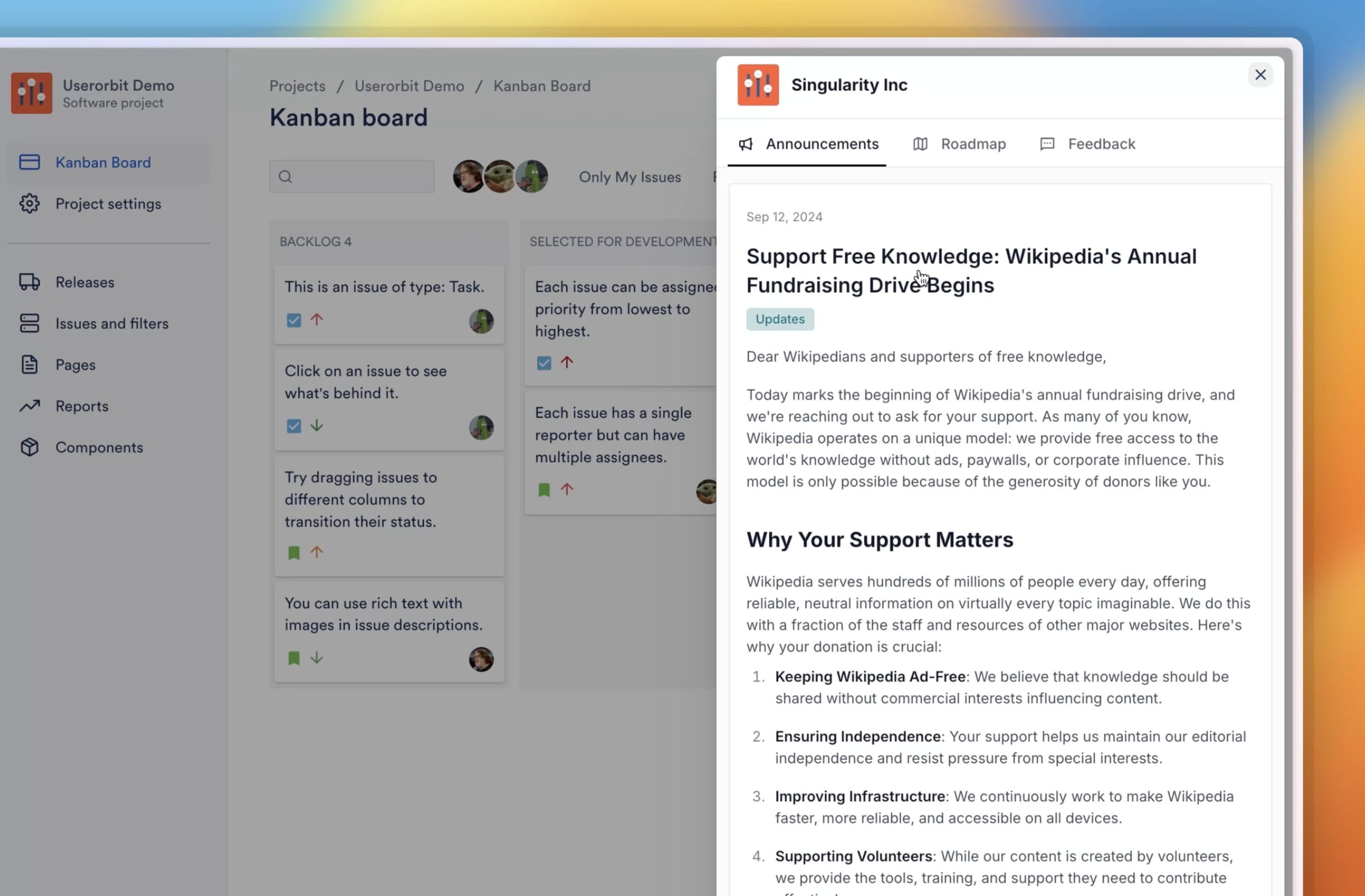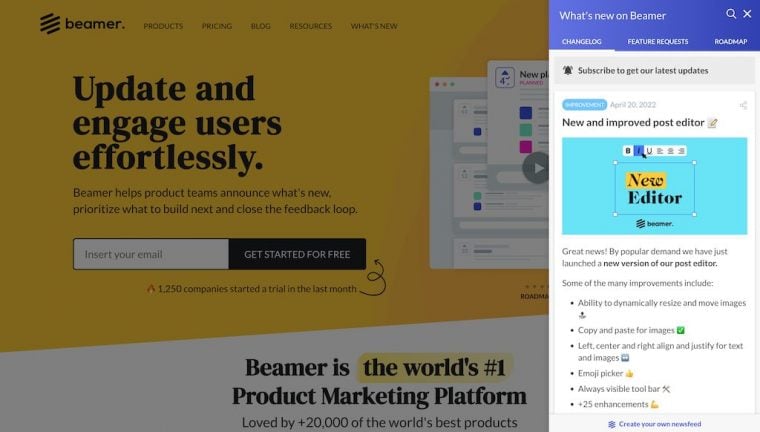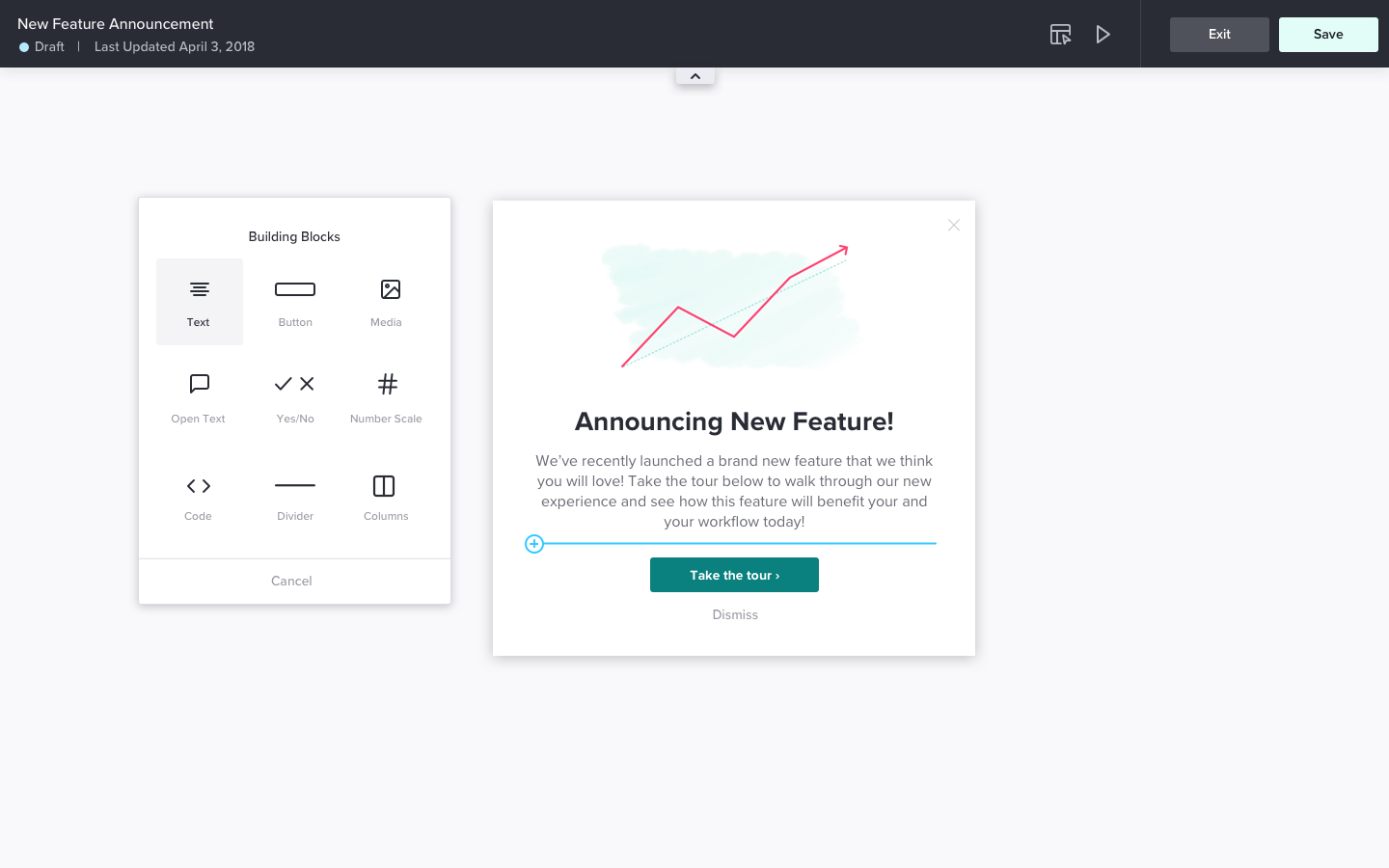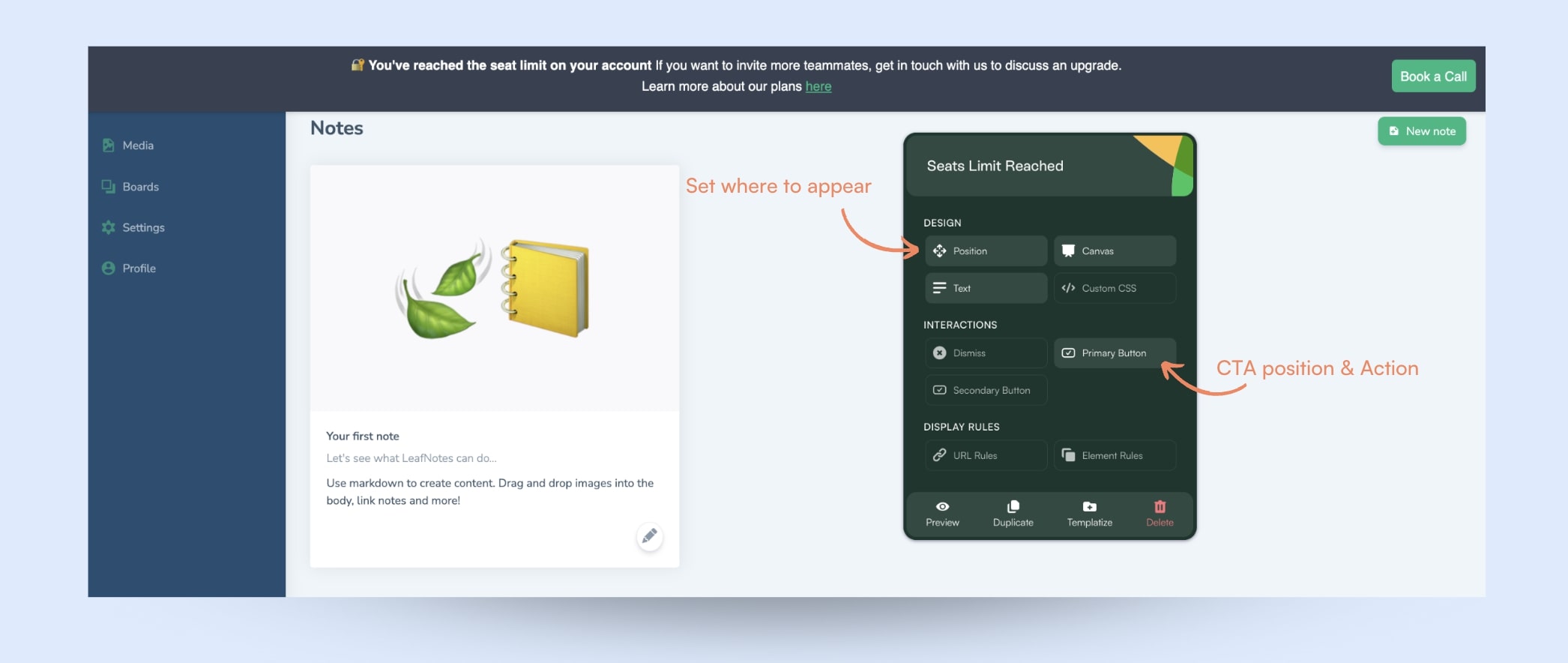Most feature launches fail. Not because the features are bad, but because users never discover them. Emails get ignored. Release notes go unread. That's why in-app messaging has become the backbone of successful feature rollouts - it meets users where they already are.
In this article, we'll explore tools that actually drive adoption, not just look pretty in your marketing team's slide deck. I've tested dozens of these platforms, and here's what actually works.
What Are In-App Messaging Tools?
In-app messaging tools deliver targeted announcements directly to users inside your product. They transform the way you communicate updates by showing the right message to the right users at the right time.
The key capabilities that matter include:
- Targeted messaging based on user behavior
- Customizable interfaces that match your product
- Analytics to verify actual feature adoption
- Seamless integration with your existing tech stack
Why Use In-App Messaging Tools?
Let's be honest: your fancy new feature is worthless if nobody uses it. In-app messaging solves critical problems:
- Visibility: Users can't miss what's right in front of them
- Context: Education happens where and when it matters
- Action: You drive immediate engagement, not "maybe later"
- Feedback: You learn instantly what's working (or not)
- Conversion: You turn awareness into actual usage
Most teams rely on email announcements that get 15% open rates at best. Meanwhile, in-app messages routinely see 90%+ engagement. The math isn't complicated.
The Best In-App Messaging Tools
1. Userorbit

Overview: Userorbit gives product teams complete control over feature rollouts with behavioral targeting that goes beyond basic user segments. Unlike generic announcement tools, it connects messaging directly to adoption metrics so you know if your announcements actually drive usage.
Key features:
- Event-triggered announcements based on specific user actions
- Multi-format messaging (modals, slideouts, tooltips, hotspots)
- Adoption funnels that track announcement-to-usage conversion
- Segmentation based on usage patterns, not just demographics
- A/B testing of announcement messaging and UI
Best for: Product and growth teams focused on measurable feature adoption, not just announcement visibility.
Pricing: Userorbit offers a free forever plan for up to 1000 users. Paid plans start at $99/month for 5000 Monthly Active Users (MAUs).
Getting started: Visit Userorbit.com
2. Beamer

Overview: Beamer creates a changelog that doesn't feel like homework with an update feed that integrates natively into your product.
Key features:
- Interactive, native-feeling changelogs
- Built-in feedback collection
- Low implementation overhead
Best for: Teams who need a simple way to keep users in the loop without overengineering.
Pricing: Free plan; paid plans from $49/month
Getting started: Check out GetBeamer.com
3. Pendo

Overview: Pendo connects the dots between announcements and product usage with top-tier analytics capabilities.
Key features:
- Deep product analytics integration
- Complex permission and targeting structures
- Enterprise-grade security and compliance
Best for: Large organizations where you need granular control over who sees what and when.
Pricing: Pendo does not offer a free plan. Paid plans start at approximately $2,000/quarter for 2,000 MAUs (Base plan) and range from $25,800 to $132,400/year depending on features and MAUs. Contact Pendo.io for a custom quote.
Getting started: Start at Pendo.io
4. Appcues

Overview: Appcues makes non-technical teams self-sufficient with an intuitive builder that requires zero developer intervention.
Key features:
- No-code builder for marketing and PM teams
- Multi-step tours and walkthroughs
- Quick implementation with minimal dev resources
Best for: Growing teams with limited developer bandwidth who need to move quickly.
Pricing: Appcues offers a 14-day free trial. Paid plans start at $249/month for the Start plan for 1,000 MAUs, $1,000/month for the Grow plan for 3,000 MAUs, and custom pricing for the Scale plan.
Getting started: Learn more at Appcues.com
5. Chameleon

Overview: Chameleon adapts perfectly to your product's look and feel while offering serious A/B testing for message optimization.
Key features:
- True native UI integration
- Advanced A/B testing toolkit
- Powerful experimentation capabilities
Best for: Data-driven teams that want to continuously improve their messaging strategy.
Pricing: Chameleon offers a 14-day free trial. Paid plans start at $279/month for the Startup plan (up to 2,000 MAUs), $999/month for the Growth plan (up to 19,000 MAUs), and custom pricing for the Enterprise plan.
Getting started: Visit chameleon.io
Comparison Table
| Tool | Key Strengths | Best For | Pricing |
|---|---|---|---|
| Userorbit | Behavior-based targeting with adoption metrics | Product teams validating feature success | Userorbit offers a free forever plan for up to 1000 users. Paid plans start at $99/month for 5000 Monthly Active Users (MAUs). |
| Beamer | Low-friction implementation | Teams keeping it simple | Free plan; paid plans from $49/month |
| Pendo | Enterprise-grade analytics | Large organizations | Free for 500 MAUs; paid from $2,000/quarter to $132,400/year |
| Appcues | No-code announcement builder | Non-technical teams | 14-day free trial; paid from $249/month (Start), $1,000/month (Grow), custom (Scale) |
| Chameleon | Native UI and A/B testing | UX perfectionists | 14-day free trial; paid from $279/month (Startup), $999/month (Growth), custom (Enterprise) |
How to Choose the Right In-App Messaging Tool
When selecting an in-app messaging tool, forget the feature checklists and ask yourself:
-
Who's doing the work? If it's non-technical folks, prioritize ease of use over advanced capabilities.
-
What's your primary goal? Announcing features is different from educating users on complex workflows.
-
How much context matters? Some tools blast the same message to everyone. Others tailor the experience based on what users have actually done.
-
How will you measure success? If you can't track whether announcements translate to adoption, you're flying blind.
-
Integration requirements? The tool needs to play nice with your existing stack, or it'll become a siloed exercise.
Conclusion
In-app messaging tools aren't magic. They won't save mediocre features or fix fundamental product issues. What they will do is ensure your best work actually gets seen and used.
I've seen teams obsess over which tool to pick while ignoring the more important question: what are you going to say and to whom? The best tool for you is the one your team will actually use to craft targeted, valuable communications-not blast generic announcements to everyone.
Feature adoption is a conversation, not a broadcast. Pick a tool that helps you start that conversation where it matters most: inside your product, with the right users, at the right moment.
